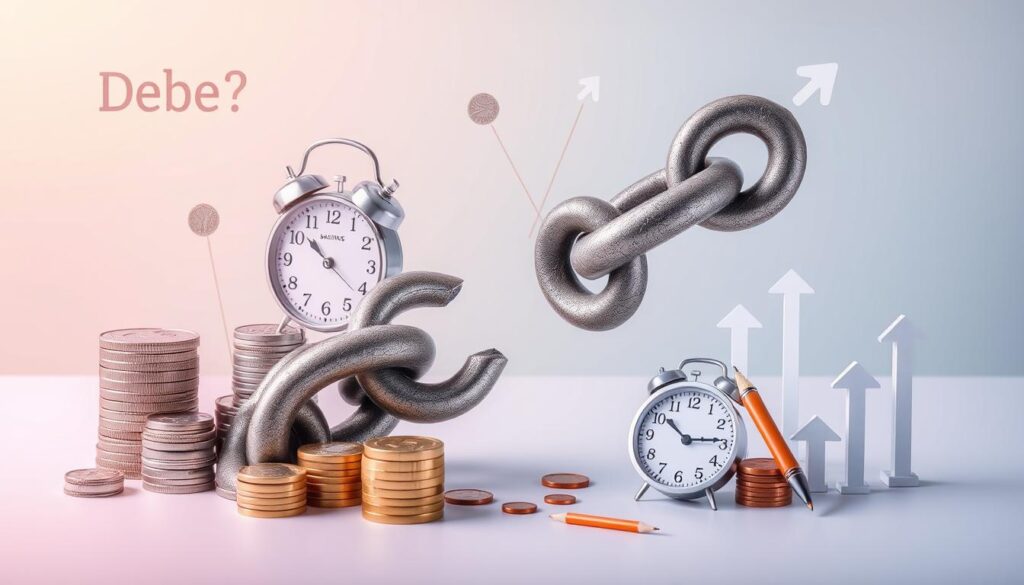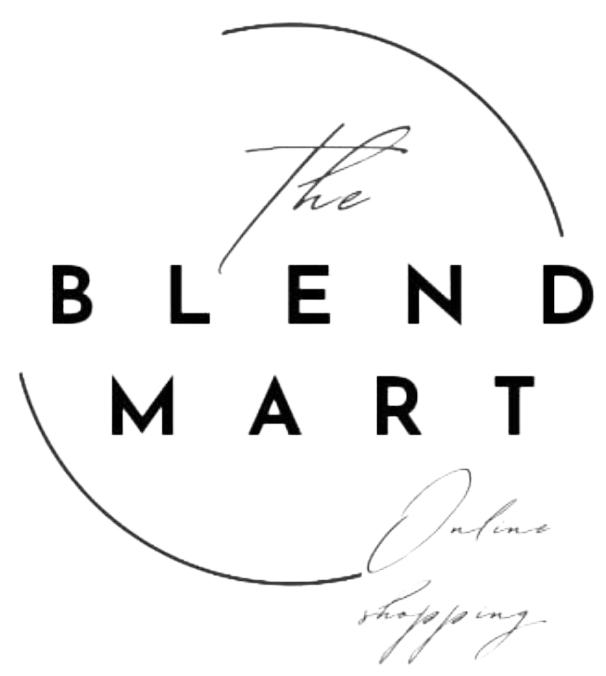Are you tired of debt weighing you down? Do you dream of a debt-free future? You’re not alone. Millions of Americans want to pay off debt quickly and take back control of their finances.
In this guide, we’ll cover effective debt reduction strategies and tips. You’ll learn about the debt snowball and avalanche methods, debt consolidation, budgeting, and side hustles. We’ll give you the tools to manage your finances and achieve a debt-free life.
Key Takeaways
- Understand your debt, interest rates, and repayment timelines to plan effectively.
- Try the debt snowball and avalanche methods to tackle debt efficiently.
- Use debt consolidation to simplify payments and lower interest charges.
- Apply budgeting strategies and use technology to track expenses and pay off debt.
- Boost your income with a side hustle or by asking for a raise to pay off debt faster.
Assess Your Debt Load
Before you can start reducing your debt, you need to know how much you owe. Look at your credit cards and personal loans compared to your gross annual income. Knowing your debt burden helps you figure out the best way to pay off your debt. You might choose to do it yourself or look into debt relief options.
Compare Your Debt to Your Income
Make a list of all your debts, including the balance, interest rate, and monthly payment for each. Then, divide your total monthly debt payments by your gross monthly income. This gives you your debt to income ratio. Aim for a ratio under 30% to keep your debt load in check.
| Debt Type | Balance | Interest Rate | Monthly Payment |
|---|---|---|---|
| Credit Card A | $5,000 | 20% | $150 |
| Personal Loan | $10,000 | 10% | $250 |
| Student Loan | $20,000 | 5% | $200 |
| Total | $35,000 | – | $600 |
Understand Your Debt Burden
Knowing your debt burden helps you focus on what to pay off first. Credit cards can have rates up to 30%, while mortgages and student loans can also add up. Knowing the cost of your debt helps you pick the right strategy, like debt consolidation or the debt snowball/avalanche methods.
Debt Snowball vs. Debt Avalanche Methods

When it comes to paying off debt, two popular strategies emerge: the debt snowball and the debt avalanche methods. Both have their advantages. The best option for you depends on your financial situation and personal preferences.
Focus on Smallest Balance First (Debt Snowball)
The debt snowball method focuses on paying off your smallest balance first. You keep making minimum payments on your other debts. As you pay off each smaller debt, you can then apply the freed-up funds towards the next smallest balance.
This creates a “snowball” effect that accelerates your debt payoff. This approach can be motivating. You’ll experience the satisfaction of eliminating debts more quickly.
Target High-Interest Debt First (Debt Avalanche)
The debt avalanche method, on the other hand, prioritizes paying off the debts with the highest interest rates first. This strategy can save you more in the long run by reducing the total interest paid on your outstanding balances.
While it may take longer to see the first debt eliminated, the debt avalanche method can ultimately lead to greater overall savings.
Ultimately, the choice between the debt snowball and debt avalanche methods depends on your personal financial situation and preferences. The debt snowball may be more motivating, while the debt avalanche can provide greater long-term savings on interest.
Whichever approach you choose, the key is to remain committed to your debt payoff strategy. Consistently make progress towards becoming debt-free.
“The debt avalanche method can save you more in the long run by reducing the total interest paid on your outstanding balances.”
Lower Your Credit Utilization

Reducing your credit card use can help you pay off debt faster and boost your credit score. By paying down your balances, you’ll lower your credit utilization ratio. This is a key factor in your credit score. It also makes it easier to get better interest rates on future loans or credit cards.
Credit card annual percentage rates (APRs) usually range from 15% to 20%, sometimes up to 30%. The interest grows daily, adding to your credit card debt. Paying just the minimum can keep you in a cycle of covering interest charges instead of paying down the principal.
- Try to keep your credit utilization under 30% of your total credit. For example, with a $10,000 limit, aim for balances under $3,000.
- Make extra payments on your highest-interest cards to reduce your credit utilization and debt over time.
- Look into debt consolidation options like balance transfer cards or loans. They can simplify payments and possibly lower your interest rates.
| Debt Reduction Strategy | Average Interest Rate | Potential Benefits |
|---|---|---|
| Balance Transfer Credit Card | 0% intro APR for 12-21 months | Reduced interest charges, simplified payments |
| Debt Consolidation Loan | 6% to 36% | Lower interest rate than credit cards, fixed monthly payments |
| Home Equity Loan | Varies based on home value | Potentially lower interest rate, but risk of foreclosure if not repaid |
By lowering your credit utilization and using debt reduction strategies, you can greatly improve your personal finance and credit score.
Debt Consolidation Strategies

Dealing with debt can feel overwhelming, but there are ways to make it easier. You can use balance transfer credit cards or debt consolidation loans. These options help you merge several high-interest debts into one, lower-interest payment. This can cut down the time it takes to pay off your debt.
Balance Transfer Credit Cards
Balance transfer credit cards let you move your debt to a new card with a 0% APR for a while. This can save you a lot on interest, helping you pay off the principal faster. But, it’s key to know the fees and terms of these cards. Some may charge a fee or have higher rates after the promo ends.
Debt Consolidation Loans
Debt consolidation loans are another way to merge your debts into one loan. This can make paying back easier and might lower your interest rate. Loans usually have longer terms, like 2 to 7 years, to make monthly payments smaller. But, make sure the loan’s rate and fees are better than your current debts.
Choosing a debt consolidation method needs careful thought. Look at the terms, fees, and long-term effects to find the right one for you. Consolidating your debt can make paying back simpler and save you money on interest. This can help you become debt-free faster.
| Debt Type | Interest Rate | Balance |
|---|---|---|
| Credit Card 1 | 18% | $3,000 |
| Credit Card 2 | 18% | $4,500 |
| Auto Loan | 5.59% | $15,000 |
“Consolidating your debts can simplify your repayment process and potentially save you money on interest charges, but it’s crucial to evaluate the terms and fees carefully to ensure it’s the best fit for your financial situation.”
Debt Reduction Strategies: tips for paying off debt faster.

Overcoming debt is tough, but the right strategies can help you get there faster. Besides the methods we’ve talked about, there are more ways to pay off debt quickly.
One good idea is to earn more money with a side job. This could be freelancing, driving for a rideshare, or starting an online business. The extra cash can go straight to paying off your debt. Studies show that writing down your financial goals can make you 42% more likely to reach them. So, set clear goals for paying off your debt to stay on track.
Also, review your monthly bills and try to get better rates from your service providers. Many people don’t know they can negotiate lower interest rates on their credit cards. By tracking your expenses for a month, you can find ways to save money and put it towards your debt.
- Put 20% of your monthly income towards debt repayment to speed up the process.
- Try the “avalanche” method, which focuses on paying off debts with the highest interest rates first.
- Look into debt consolidation options like balance transfer credit cards or loans, but be careful of the risks.
Dealing with debt is a big job that needs a mix of strategies. By budgeting, increasing your income, and negotiating better rates, you can use your money to your advantage. This way, you can become debt-free sooner than you think.
Boost Debt Payoff with Budgeting
Creating a detailed budgeting plan is key to paying off debt quickly. By sorting your expenses and finding ways to save, you can direct more funds towards your personal finance goals. This includes getting rid of debt. There are many budgeting methods out there. It’s vital to pick one that fits your lifestyle and money management style.
Find a Budgeting System That Works for You
Choose a budgeting method that suits you, like the zero-based approach or the 50/30/20 budget. The goal is to make a budget that matches your financial situation and lifestyle. Try out different methods to find the one that keeps you on track and helps you understand your spending.
Use Technology to Streamline Budgeting
Technology can make budgeting easier and more effective. Use budgeting apps and online tools to track your expenses and see how you’re doing on debt payoff. These tools can keep you organized and motivated as you work towards being debt-free.
| Budgeting Technique | Description | Potential Benefits |
|---|---|---|
| Zero-Based Budgeting | Allocating every dollar of income to a specific expense category, with the goal of having a zero balance at the end of the month. | Provides a detailed view of spending, encourages mindful allocation of funds. |
| 50/30/20 Budget | Dividing your income into three categories: 50% for necessities, 30% for discretionary spending, and 20% for savings and debt repayment. | Simplifies the budgeting process, helps maintain a balanced approach to spending and saving. |
“Budgeting is the key to financial freedom. It helps you understand where your money is going and ensures you’re allocating your resources effectively towards your goals.”
Lower Your Monthly Bills
One way to free up money for debt is to cut down on monthly costs. You can do this by asking your service providers for better rates. This includes your cell phone, cable, or insurance. If you can’t get a better rate, look for a new provider that offers a better deal.
Even small savings can add up quickly. These savings can help you pay off your debts faster.
Negotiate Better Rates
Don’t hesitate to call your service providers to ask for lower rates. Many companies want to keep your business. Do your research and compare rates to strengthen your negotiation.
Be honest about your financial situation. See if they can offer a better deal. This simple step can save you a lot of money each year. You can use this money to pay off your debts.
Switch Service Providers
If you can’t get a better rate, think about switching providers. Look for one that offers a better deal for your needs and budget. Some providers have special rates or incentives for new customers.
Remember to consider any fees for switching. But the savings can be worth it.
| Service | Current Rate | Negotiated Rate | Savings |
|---|---|---|---|
| Cell Phone | $80/month | $60/month | $20/month |
| Cable/Internet | $120/month | $100/month | $20/month |
| Car Insurance | $150/month | $130/month | $20/month |
By negotiating or switching providers, you can save money. This lets you focus more on debt reduction and achieving financial freedom.
Increase Your Income
Boosting your income can speed up your debt payoff. Look into side hustles like freelance work, driving for a rideshare, or selling online. This extra cash can go straight to paying off your debt, making you debt-free sooner.
Take on a Side Hustle
Side hustles are a great way to earn more and tackle your debt. Here are some ideas:
- Freelance writing, graphic design, or web development
- Driving for a rideshare service like Uber or Lyft
- Selling handmade crafts or products on platforms like Etsy
- Renting out a room or space in your home through Airbnb
- Becoming a virtual assistant or providing customer service support
Negotiate a Raise at Work
To increase your income and debt payoff, ask for a raise at work. Check the market rate for your job. Show your boss your achievements and ask for a salary boost. Even a small raise can help pay off your debt.
By trying side hustles and negotiating a raise, you can earn more. This extra money can help you pay off your debt faster. Soon, you’ll be debt-free and ready to reach your financial goals.
Explore Debt Relief Options
If you’ve tried everything and still can’t pay off your debts, it’s time to look into debt relief options. These can offer some relief, but they also have downsides. It’s crucial to think carefully about the pros and cons before deciding.
Debt Management Programs
Debt management programs can lower your interest rates and waive fees. They are often run by non-profit credit counseling agencies. These programs help you pay off your debts over time. However, they may charge fees and affect your credit score.
Bankruptcy
Bankruptcy is a legal way to deal with your debts. There are two main types: Chapter 7 and Chapter 13. Chapter 7 can wipe out most of your debts, while Chapter 13 requires a repayment plan. Bankruptcy can hurt your credit and finances for a long time, so think it over carefully.
Debt Settlement
Debt settlement involves negotiating with creditors to pay less than what you owe. You work with a third-party company to reach this agreement. It can harm your credit score and might not work for everyone.
Before choosing a debt relief option, make sure you understand the consequences. Getting advice from a financial advisor or credit counselor can help you make the right choice for your situation.
| Debt Relief Option | Description | Potential Impact |
|---|---|---|
| Debt Management Programs | Negotiate with creditors to lower interest rates and waive fees | Fees, potential impact on credit score |
| Bankruptcy | Legal process to eliminate or restructure debts | Significant long-term consequences on credit and financial well-being |
| Debt Settlement | Negotiate with creditors to pay a lump-sum amount less than the total owed | Negative impact on credit score |
“Exploring debt relief options should be a carefully considered decision, as each option has its own unique benefits and drawbacks. Seeking guidance from a financial professional can help you navigate the best path forward for your specific situation.”
Conclusion
In conclusion, using debt reduction strategies can help you pay off debt faster. This includes the debt snowball or avalanche methods, debt consolidation, budgeting, and increasing your income. The key is to find the right approach for your situation and stay consistent.
By tackling high-interest debts and lowering your credit utilization, you can make big strides. Debt consolidation can also help. Adding a solid budget and ways to increase your income will speed up your progress. Getting advice from credit counselors or financial advisors can offer valuable insights and solutions.
The journey to financial freedom starts with a solid plan and a commitment to paying off debts. By following the strategies in this article, you can take control of your finances. This will improve your credit and bring you financial stability and peace of mind. Start this empowering journey towards debt-free living and discover the endless possibilities ahead.

